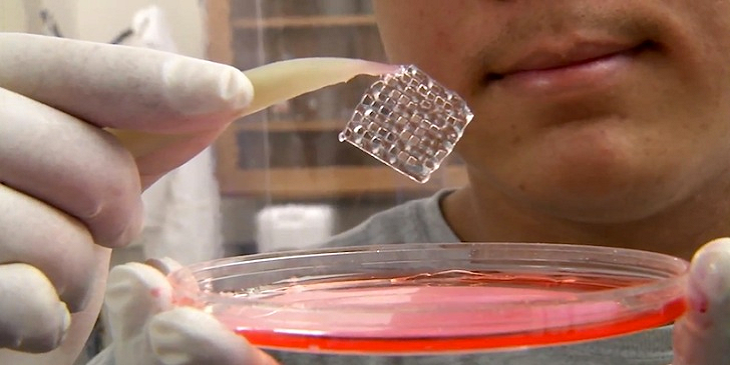
With the ultimate, far reaching goal being that of 3D printing–and regularly using–human organs for transplantation, researchers and scientists are already making impressive progress, and fast.
We follow stories of bioprinting as it progresses from simple cell structures to 3D printed breast cancer tissue, actual 3D printed glands and even samples of small 3D printed ears. One of the obvious challenges in bioprinting industry, basically in its beginning stages, evolving before us (well, mainly before those in research labs) on a daily basis is that of hardware, software, and–most crucial–materials. This is where those who we are relying on in R&D all over the world are experiencing not just successes but according to a recent survey, also frustration and annoyance, as they create an entirely new world that meshes technology and science.
From 3D printed cells to tissue to organs, the world of 3D bioprinting is here to stay, and it’s growing, according to the latest study just released by Future Market Insights. In 3D Bio Printing Market: Global Industry Analysis and Opportunity Assessment 2015-2025, analysts show that North America is leading in 3D bioprinting, as Europe slowly gains ground following in suit. The market for 3D printing and 3D bioprinting in Asia is expected also to grow rapidly and significantly due to numerous reasons, and mainly the amount of funds flowing into R&D.
The areas in which 3D bioprinting operates are:
- Electron beam melting
- Laser beam melting
- Photo-polymerization
- Stereolithography
- Digital light processing
- Two-photon polymerization
- Droplet disposition
- Inkjet printing
- Fused disposition modeling
- Multi-phase jet solidification
As we know, the first stepping off point has been expansive progress in the development of 3D printed models, devices, prosthetics, and implants–even 3D printed devices that can serve to apply antiobiotics internally post-surgery to fight off infection. With the ability to create items that are specific to the patient and can be readily customized, a new world opens as we shed the one-size-fits-all tradition–and with 3D printing, that has an impact in many, many areas besides health.
It’s also pointed out–and this is an issue we follow constantly–that there just aren’t enough people with the skillsets in 3D printing–and especially something as specific as bioprinting–to go around. That is an obstacle. But it’s also one that everyone is well aware of, and from the government to a range of larger companies involved with 3D printing, steps are being made to put 3D printing into education and see that students graduate with the appropriate knowledge to enter into careers in manufacturing, technology, and more.
Analysts expect to see “healthy growth” within the next ten years, and especially in 3D bioprinting, where they foresee “significant growth.” This is seen as a reality due to the government’s role in healthcare, expanding research and the entire infrastructure. 3D printing is attractive and deemed worthy of investment from a government viewpoint due to the bottom line, allowing for savings as 3D bioprinting allows for reduction in costs due to alleviating risks in surgeries and in correlation with anesthesia during longer surgeries.
Key players are expected to be:
- Stratasys Ltd.
- 3D Systems, Inc.
- Materialise NV
- Organovo Holdings Inc.
- SOLS Systems
- Youbionic
- The Pexion Group
- Oceanz 3D printing
Even the average layperson can envision and imagine the impacts these strides offer to the future of healthcare and humanity overall. Not surprisingly, the subject of how far and how quickly we are progressing with 3D printing in the area of biology and recreating parts of the human body can often be controversial as well, causing some to feel threatened by advances in technology and the potential of great change. Let us know your thoughts on the future of bioprinting in the 3D Bioprinting Growth forum thread on 3DPB.com. See more from Future Market Insights and read the full study here.
